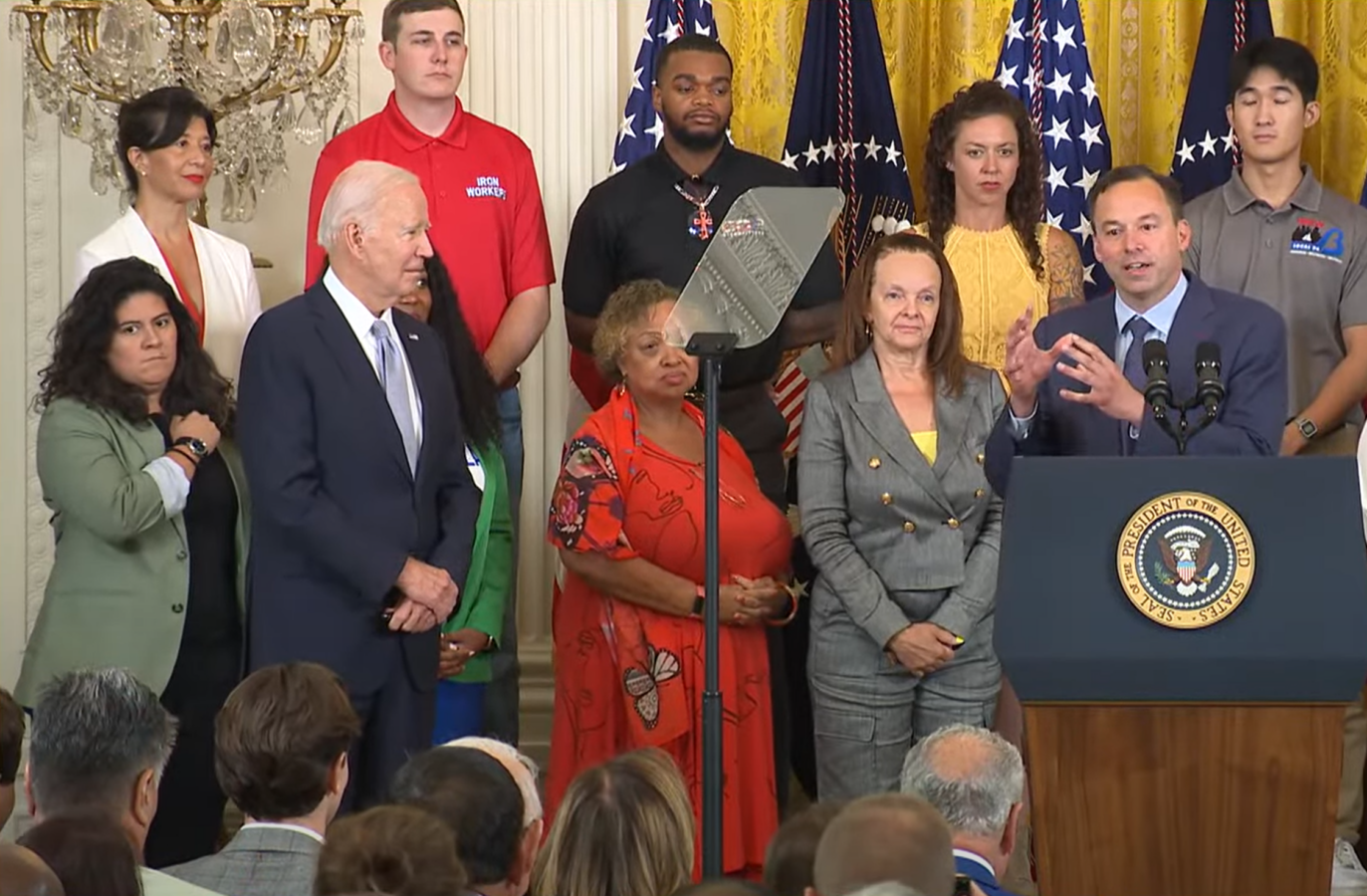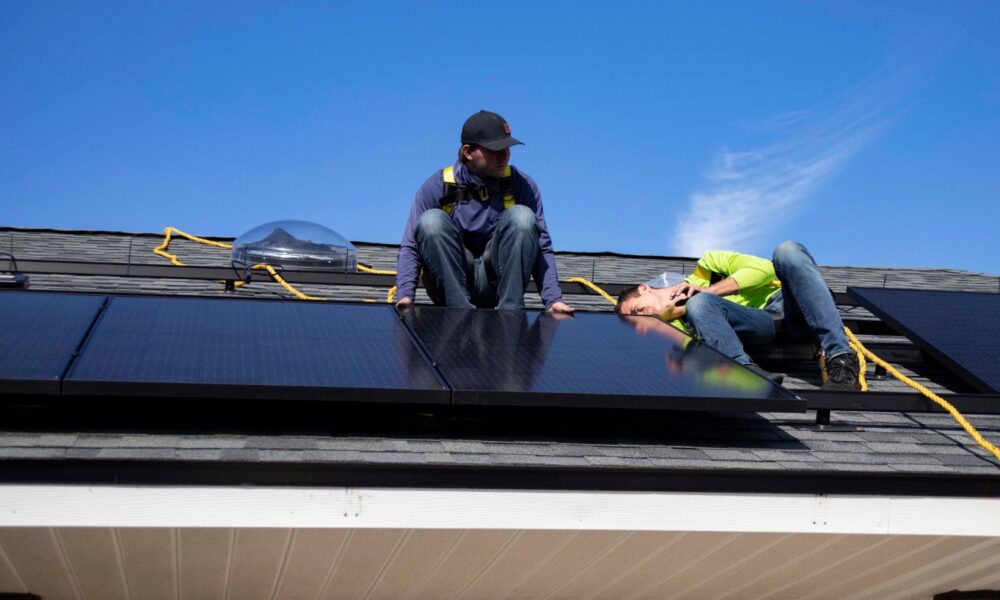What I remember most was the shock, then jubilation, among my colleagues at UCS last summer.
After months of working to influence the whipsaw negotiations on a federal budget reconciliation bill that would unlock massive funds for climate action, even the most diehard among us were starting to lose hope that our partisan Congress would pull it together on climate. This political rollercoaster ride was also unfolding across last year’s Danger Season, stressing the urgency of the need to act big, and act now.
Then, suddenly, we learned that the Inflation Reduction Act (IRA) had passed the Senate. And just as suddenly, on August 16, 2022, the bill became law: the largest-ever one-time federal investment in climate action that humanity has ever seen. It’s an investment in our future of a size unseen since the New Deal.
It was simply awesome. But it wasn’t perfect, nor unassailable. The same partisan politics that delayed the IRA’s passage also carved some flaws into the bill. It’s outrageous and counterintuitive, for example, that the IRA allows for some new fossil fuel infrastructure, while the rest of its policies aim to eliminate the need for polluting technologies.
Despite the poison pills, a year later (in President Biden’s own famous words), the IRA is still a Very Big [**] Deal.
Its original $369 billion in grants, loans, and tax credits is already swiftly transforming industries in the energy, transportation, and agriculture sectors. An updated evaluation from the Joint Committee on Taxation in April this year, estimated that total government investment spurred by the IRA will top half a trillion dollars from 2023 to 2032. And that figure doesn’t include all the law’s programs including consumer tax credits for electric vehicles, on which UCS was a leading champion.
Because UCS has been fighting unceasingly for decades to pass significant federal legislation on climate, we took a beat and paused briefly to celebrate.
And then we dove straight back into our work: parsing out the legislation’s many programs, projects, and initiatives; determining their implications for UCS work; and identifying where and how we could continue to use science and advocacy to raise ambition in the swift, fair enactment of its provisions.
While I could get into the weeds of the IRA’s 730 pages on tax credits and green banks and subsidies, what’s most important to know is that this legislation aims to help people.
And UCS is charged up and ready to make sure it does.
There are a lot of variables that can affect how a law as large as the IRA gets implemented, so shortly after its passage, our climate, clean energy, transportation, and sustainable agriculture experts put their heads together to figure out how to direct their efforts to ensure an efficient, effective, and equitable implementation. One year in, our staff are working in partnership with environmental justice organizations, federal agencies, utilities, labor organizations, states, communities, and individuals to ensure IRA initiatives are implemented justly.

Investing in climate resilience and clean energy
For years, UCS has worked in partnership with groups in California, Illinois, Maine, Massachusetts, and Michigan to push clean energy initiatives and bolster climate resilience—so it was a natural fit to keep our IRA work that is focused on clean energy localized in these states.
“Perhaps the biggest benefit of the IRA,” says my colleague Brady Watson, Senior Campaign Coordinator in the Climate & Energy program, “is making clean energy affordable and accessible to communities that have been most impacted by fossil fuel pollution, and to communities that historically have been unable to afford things like rooftop solar. There are application deadlines for various IRA programs nearly every week, so a lot of our work is focused on making sure we’re on top of the application timelines, and helping communities, states, local governments, and nonprofit partners take advantage.”
In Illinois, Massachusetts, and Michigan in particular, UCS is working in coalitions to provide guidance around IRA provisions including low-income and energy communities’ bonus tax credits, the greenhouse gas reduction fund, and Environmental and Climate Justice air and climate pollution reduction grants.
And one early success undoubtedly supported by the IRA is the recently passed bill advancing offshore wind projects in Maine.
Investing in conservation, agriculture, farms, and farmers
In an acknowledgement that our food system must radically transform to protect our environment, address historic and current injustices, and help farmers be part of the climate solution, the IRA invests nearly $20 billion over five years in new money for conservation on farms, with a focus on practices that build climate resilience. This is the largest farm conservation investment since the Dust Bowl of the 1930s.
The new funding is intended to support existing USDA programs that promote beneficial farming practices—such as cover crops, complex crop rotations, and smart grazing systems—underwriting some of the costs associated with adopting those practices.
“These programs are popular with farmers but underfunded, such that in recent years, nearly three-quarters of applicants have been turned away,” says Melissa Kaplan, Senior Manager of Government Affairs in our Food & Environment program.
One of these programs, the Conservation Stewardship Program (CSP), is particularly effective: UCS has evaluated the CSP’s return on investment, and found that every $1 spent on the program delivers $4 in benefits. So, our focus has shifted largely to maintaining this funding in the 2023 Food and Farm Bill, and ensuring it is not cut or eliminated in the future, Kaplan says.
UCS has submitted several comments to USDA on implementation and distribution of IRA funds since the bill was enacted and asked our members to urge that IRA funding for climate and conservation be protected. You can join the call!
Investing in cleaner cars and trucks
The UCS scientists and experts who work on cleaning up emissions from cars and trucks and helping communities overburdened from transportation pollution are focusing their efforts on weighing in with the Biden administration to implement IRA provisions effectively and equitably.
“There are decisions that the administration must make when it comes to interpreting language in the IRA that can make a significant difference in the impact of its provisions,” says Senior Washington Representative for Clean Transportation Anne Clement. Our role, she says, is to provide technical guidance to help inform these decisions.
For example, Clement says, a provision known as the 30C alternative fuel infrastructure tax credit, which supports EV charging infrastructure, was extended and modified in the IRA. One of the changes was the requirement that chargers be located in census tracts that are low-income or non-urban. However, Clement points out, how “non-urban” census tracts are determined could significantly impact the number of people who can access the credit. UCS and partner organizations have been advocating for an appropriate breadth of eligibility to increase charger deployment.
Broadly, she says, IRA investments are already spurring domestic investments in electric vehicle and battery manufacturing, and supporting, through tax credits and investments, the wider adoption of electric vehicles, both passenger and freight vehicles.
Following the money
With billions of dollars at stake, there is always the risk that this money won’t end up where it is most needed. If not monitored closely, the benefits of the IRA could end up going to those who aren’t in need, or to projects that could end up hurting communities. Specifically, if money doesn’t flow to disadvantaged communities, a just transition will not happen, and existing inequities embedded in our economy will continue.
UCS is on the case—including an organization-wide initiative to track IRA investments to make sure they are getting to communities most in need, and to help hold bad actors accountable when they do not.
There’s also a risk of certain state governments opposed to the goals of the IRA delaying, diverting, blocking, or otherwise irresponsibly managing federal funds intended for recipients in those places. UCS (and other organizations) have a role in monitoring the deployment of these IRA programs’ areas of need—and we are.
Committed to seeing it through
UCS collaborated behind the scenes for many, many years on many of the individual legislative pieces and concepts that ultimately composed the IRA’s sections on clean energy, climate resilience, environmental justice, food and agriculture, and transportation. Our experts gave feedback on drafts and supported several precursor bills that informed policies in the IRA.
And once we learned about the bill as it was drafted, we conducted analyses, wrote reports and blogs, and sent out action alerts to engage our supporters to press policymakers to pass it. We held discussions with other NGOs, congressional offices, federal agencies, and state- and local-level stakeholders around what programs and criteria could be the most impactful for decarbonizing key sectors of the economy, benefiting communities, and achieving climate change emission reduction goals.
We worked so hard for this legislation for so long. And we’re working just as hard—and will continue to work for as long as it takes—to ensure its benefits are spread equitably and effectively, and to push for additional transformative climate change-fighting policies on the federal and state level.
I think I can speak for all of UCS when I say: we’re hopeful that the IRA is just the beginning.

